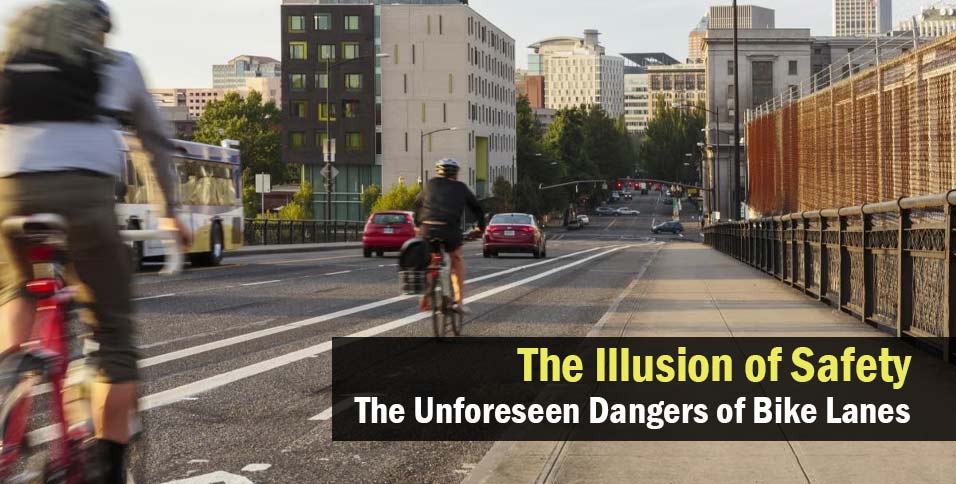In many cities across the country, dedicated bike lanes have been added to urban streets with the goal of improving safety for cyclists. By separating bicyclists from motor vehicle traffic, these painted paths aim to prevent catastrophic collisions and make cycling feel more secure. However, a growing number of studies and real-world incidents suggest that bike lanes may be creating an illusion of safety that puts riders at increased risk in ways urban planners never anticipated.
One of the primary dangers is that bike lanes can lull cyclists into a false sense of security and make them less vigilant about dangerous intersections and the possibility of careless drivers. When bicyclists are in a designated lane separated from traffic, there can be a tendency to become overly trusting that motorists will see them and avoid turning across the bike lane. Emboldened by the perceived safety measure, some cyclists admit to being less alert and missing visual cues that a car is about to make a sudden turn directly into their path.
Even more hazardous is the issue of parked cars and open vehicle doors, which sometimes block or obstruct bike lanes and raise the risk of a bicycle accident. Urban cyclists are already all too familiar with the risk of swerving into traffic to avoid a suddenly opened car door. But with bike lanes, cyclists are routed directly alongside parallel parking spaces and driveways where doors can unexpectedly swing into their path. Distracted drivers exiting parked cars also pose threats of stepping blindly into the flow of bike traffic.
In many cities, increased density, construction, traffic congestion and ride-sharing services like Uber and Lyft mean bike lanes are frequently blocked by illegally parked vehicles that force cyclists into precarious merges with car traffic. Similarly, delivery trucks, utility vehicles, garbage trucks and other large vehicles service needs often require them to pull into or across bike lanes – creating hazards and obstacles if cyclists aren’t hyper alert at all times.
Beyond obstructions, poor design and lack of maintenance of some bike lanes are also concerning safety factors. Faded lane markings, crumbling pavement conditions, confusing directional flows, and insufficient physical barriers like bollards or curbing leave cyclists vulnerable to cars straying into the lane space. Even small potholes or storm drain grates can be far more dangerous when cyclists don’t have an ability to swerve out of the bike lane to avoid them.
Despite these risks, many cyclists feel societal and political pressure to embrace bike lanes as a convenient solution rather than raise inconvenient truths about their potential shortcomings. After lobbying for decades for cities to create more bike infrastructure, there’s reluctance to be seen as criticizing a major investment intended to benefit riders.
Cities are understandably reticent to admit flaws or remove brand-new bike lanes after spending millions to create them. Some studies even suggest that in car vs. bike collisions after bike lanes were installed, police may automatically assume the motorist was at fault – leaving little incentive for cities to acknowledge design flaws that contributed to crashes.
None of these concerns, however, should deter the overall goal of creating better bicycle infrastructure and normalizing cycling as a healthy, sustainable mode of transportation. The push for protected and separated bike lanes and off-street trail networks is still critical. However, there needs to be an honest re-evaluation of how “traditional” urban bike lanes are designed, implemented and integrated into the existing traffic environment. Truly prioritizing cyclist safety may require a different philosophy.
That could mean more physical barriers and curbing rather than simple painted road markings. Perhaps it involves traffic flow models that completely separate cars and bicycles, rather than squeezing both modes onto the same city streets. Or it might require greater education for cyclists on the specific dangers of urban bike lanes and emphasizing defensive riding practices in these supposed “safe” zones.
Bike lanes alone should never create complacency about the risks of urban cycling. Understanding and mitigating their limitations and unforeseen hazards will be key to keeping cyclists truly safe on city streets.
Also Read: Embrace the Future of Urban Transportation with E-Bike Commuting















